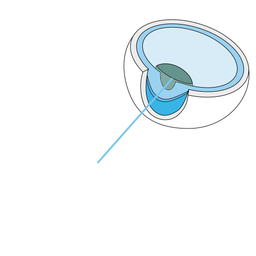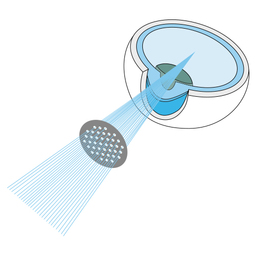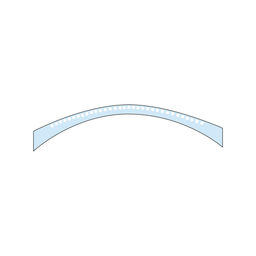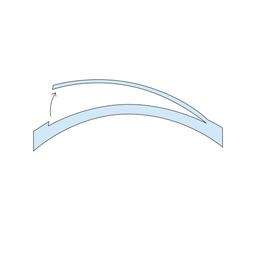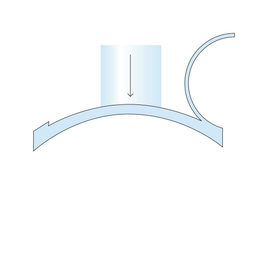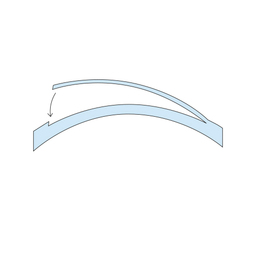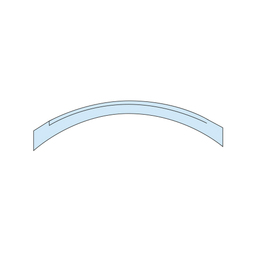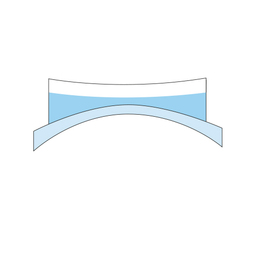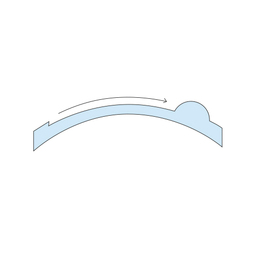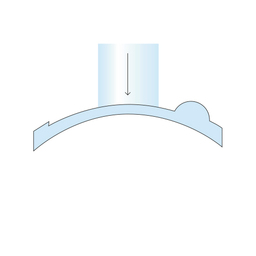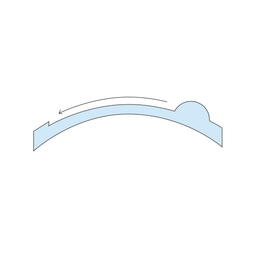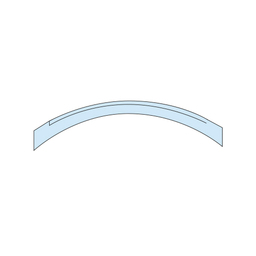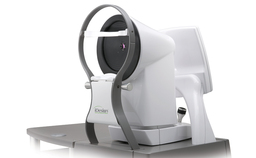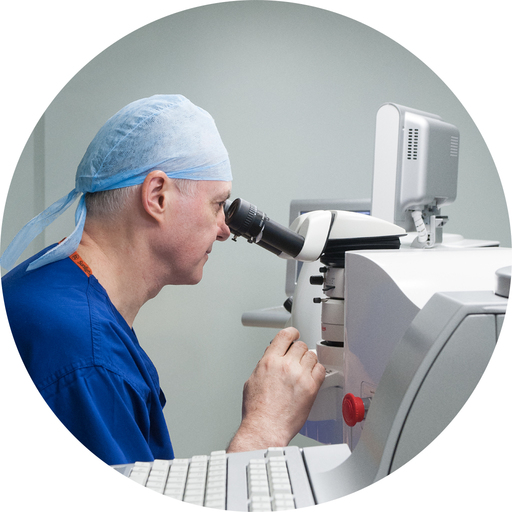
Laser Refractive Surgery
- Wavefront-guided IntraLASIK (LASIK)
- Wavefront-guided surface treatment / LASEK
As a specialist corneal surgeon, Julian Stevens has performed laser refractive surgery since the original trials in 1990. He has international credibility as a pioneer of laser eye surgery and for achieving excellent results with wavefront-guided treatment, the most sophisticated procedure.
What is laser refractive surgery?
Laser refractive surgery (also known as laser eye surgery, laser vision correction, PRK, LASIK or surface treatment / LASEK) is laser treatment using an excimer (ultraviolet) laser to change the shape of your cornea at the front of your eye. Laser treatment aims to correct myopia, hyperopia and astigmatism. Wavefront-guided treatment also aims to reduce wavefront aberrations.
Wavefront aberrations
These are imperfections unique to the individual eye. Some eyes have significant wavefront aberrations which cannot be corrected by glasses or contact lenses, known as ‘high order aberrations’. Quality of vision and visual potential can be improved if these aberrations are reduced.
Why consider laser treatment?
Approximately 50% of the population suffer from reduced unaided distance vision sufficient to require the use of glasses or contact lenses. Laser refractive surgery offers the potential to reduce or eliminate total dependence on lenses or glasses. Wavefront-guided treatment also has the potential to improve quality of vision.
Why choose Julian Stevens?
With over 25 years' experience in vision correction, Julian Stevens has been delivering excellent results with the most innovative laser eye treatments and technology. He is professionally respected by colleagues around the world as an expert in laser refractive surgery.
Clinical excellence
Julian Stevens is highly experienced and has been performing laser refractive surgery since 1990. Mr Stevens has now performed more than 20,000 treatments (15,000 being wavefront procedures).
You will meet Mr Stevens at your initial consultation, where he will discuss personalised treatment options with you. Mr Stevens will personally perform your treatment.
Julian Stevens is internationally recognised as a pioneer of laser refractive surgery. He is a key contributor to the development of laser and wavefront technology, and to wavefront-guided treatment, which is the standard of care in his practice.
A specialist and highly knowledgeable team work closely with Mr Stevens, offering you the best possible service and care.
Reputation
Julian Stevens is trusted by individuals in vision critical occupations such as pilots and military personnel, and has a proven track record of achieving excellent results.
Mr Stevens has an established reputation that attracts many medical practitioners for their own treatment, including GPs, Consultants and Optometrists.
Julian Stevens has an exceptional academic background, graduating from Oxford, and then undertaking further clinical training at Cambridge and higher specialist training at Moorfields.
Trust
Julian Stevens audits his results and has a reassuring track record for achieving a very low complication rate for laser eye surgery.
Mr Stevens holds the Royal College of Ophthalmologists certification in laser refractive surgery.
Reading vision and presbyopia
Presbyopia is the normal ageing process of the lens inside the eye. It reduces the eye’s ability to change focus. As we reach middle age, near vision is affected and reading glasses are often required. Laser eye surgery does not stop or treat presbyopia because laser treatment is applied to the cornea (at the front of your eye), whereas presbyopia occurs due to changes to the lens (inside your eye). However, laser eye surgery may still be option for those in middle age.
Laser treatment and middle age
Many middle-aged people choose laser eye surgery to correct distance vision, whilst accepting they will have to use reading glasses. For some people, laser eye surgery can aim for monovision (blended vision or micro-monovision), where one eye is focused for distance and the other for a mid-range or reading. This is often suited to people who are used to monovision with contact lenses.
Lens implants are an attractive alternative for those in middle age who want both distance and near vision, reducing the need for glasses. Learn more about lens implants.
Wavefront-guided treatment
Wavefront scanning is used instead of an optician’s sight test to calculate the exact excimer laser treatment required. Wavefront-guided treatment is specific to your individual eye and unique like a fingerprint. It is the most advanced form of laser vision correction.
Wavefront-guided treatment involves:
1. Measuring the unique wavefront aberrations in your individual eye.
2. Calculating a completely customised procedure based on these measurements.
3. Accurately delivering the unique shape using the excimer laser.
Wavefront scanning is more accurate and more precise
Wavefront sensors measure your focus at multiple locations. This provides an individual wavefront map of your eye and is comparable to having a sight test performed at each point. Wavefront sensors can identify and measure imperfections much more precisely than older methods used in a normal sight test.
Wavefront can correct more imperfections
Wavefront-guided treatment aims to correct myopia, hyperopia and astigmatism. It also aims to treat the unique ‘high order aberrations’ of each eye, which cannot be corrected by glasses or contact lenses. Therefore wavefront provides for the best possible visual outcome.
Improved outcomes and night vision
There is a significant improvement in visual outcome compared to non wavefront-guided treatment. It is particularly helpful in aiming to provide better quality vision at night and in dim light compared to non wavefront-guided treatment.
High resolution technology
Julian Stevens uses the iDesign 2. With more than 5 times the precision of previous wavefront sensors, this is the most sophisticated technology available. Learn more about iDesign.
Wavefront-guided IntraLASIK (LASIK)
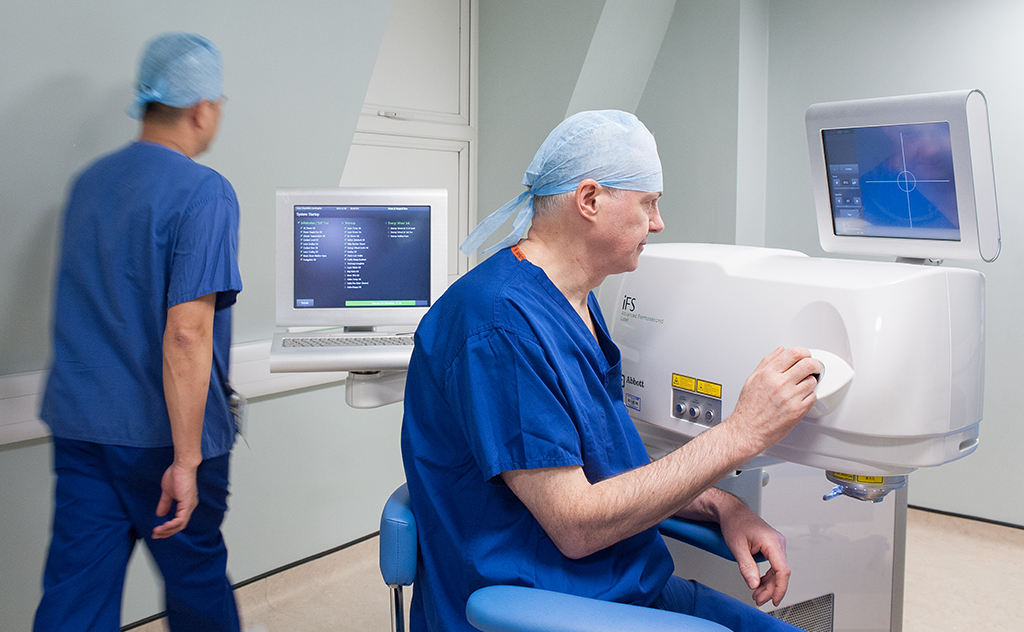
IntraLASIK (Laser-Assisted in SItu Keratomileusis) is the creation of a very thin flap in the front part of the cornea using an IntraLase femtosecond laser. This is followed by excimer laser treatment under the protective flap. This procedure is also known as iLASIK or all-laser LASIK. It normally results in fast return of vision with minimal pain or discomfort.
IntraLASIK is the most popular laser eye treatment
Each year over a million eyes around the world are treated by IntraLASIK. It is the most commonly performed laser refractive procedure.
Fast recovery of vision
There is normally good immediate post-op vision, which improves further within hours. This usually allows you to have treatment with little break from your normal lifestyle. This makes IntraLASIK much more convenient than LASEK.
IntraLASIK is usually painless
There is a brief sensation of pressure during the procedure. There is normally a lack of pain or discomfort after treatment.
Greater safety with blade-free flap creation
The key advantage of using the IntraLase is the very precise computer controlled thin flap creation.
Wavefront-guided advanced surface treatment / PRK / LASEK
Known as advanced wavefront guided surface treatment, PRK or Laser Assisted Epithelial Keratomileusis (LASEK). This is a surface laser treatment where an excimer laser is used to reshape the surface stromal layer of the cornea. It involves moving aside the corneal epithelium and then replacing it rather than removing it as with traditional PRK.
surface treatment for military personnel
Surface treatment (LASEK) is the only recommended treatment when there is the possibility of trauma to the eye, such as with professional boxing or for military personnel. Find out more about laser treatment for the military.
Suitable for extreme and contact sports
As there is no flap in the cornea, these activities can safely be performed.
An attractive alternative to IntraLASIK
Surface treatment is often recommended when IntraLASIK is not suitable, for example for those with thin corneas.
Recovery after surface treatment
Modern advanced surface treatment bears little resemblance to the previous PRK technique of the 1990s. The healing process is much faster but the recovery of vision is still much slower than IntraLASIK. Most commonly there is no or minimal pain as long as the post treatment drops are used, but you may feel a ‘gritty’ sensation and light sensitivity is almost universal for the first four to five days.
Clarity of vision is normally reduced during this healing stage and vision is blurred. After one week driving vision is normally attained, though it can take longer if a large prescription is treated and for driving at night.
Technology
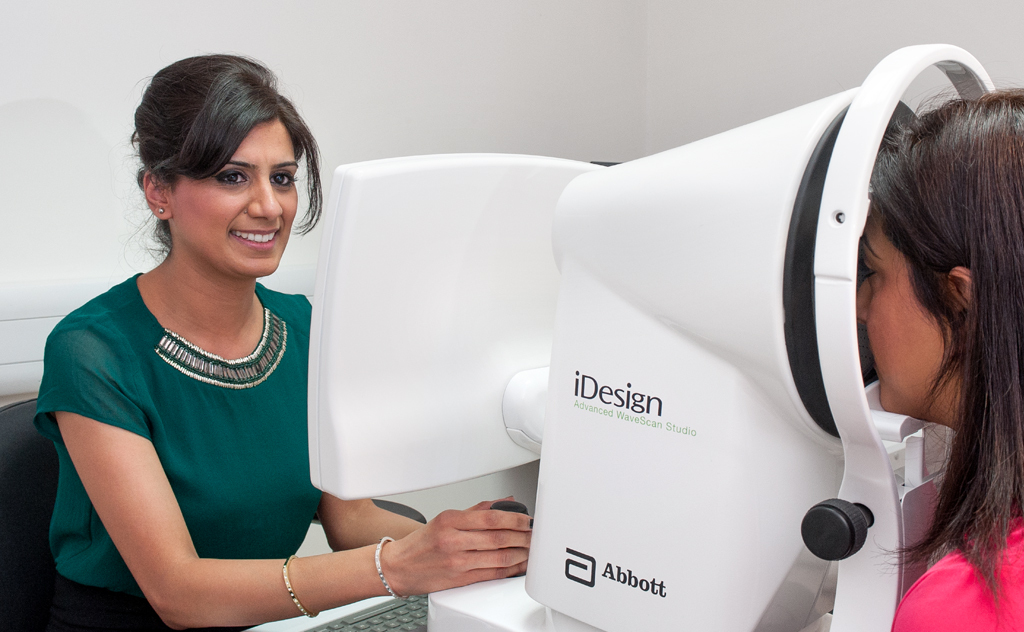
Choosing the right technology is crucial. Several types of laser technology are available from different manufacturers and differences in the performance of these systems will affect your end result. Julian Stevens uses only the best and latest technology with the potential to achieve the best possible visual outcome.
Safety
This advanced technology is designed for your safety and your reassurance. The lasers have uninterruptible power supplies in the event of any power failure or even lightning strike during treatment.
AMO iDesign wavefront scanner
The AMO iDesign very high resolution wavefront scanner is a precision Hartmann-Shack aberrometer. It measures the wavefront aberrations of the eye to create a wavefront map. A high fidelity Fourier/zonal wavefront reconstruction provides the highest levels of accuracy currently available. Learn more about iDesign.
iFS IntraLase femtosecond laser
The femtosecond laser is an ultrafast laser. Its pulses are used to apply low energy to precise coordinates and so separate tissue in order to create the IntraLASIK flap.
VISX StarS4-IR excimer laser
The excimer laser uses tiny laser pulses to subtly sculpt the cornea. The VISX StarS4-IR laser is a precision wavefront-guided excimer laser with both variable spot scanning (VSS) and variable repetition rate (VRR) to avoid heating the cornea during treatment. It has sophisticated eye tracking which means it tracks eye movement during the procedure.
Iris registration
Successful wavefront-guided treatment requires each laser pulse to be delivered to the exact intended position on the cornea. This accuracy is achieved by capturing your unique iris features that form a “circular barcode”. This allows your treatment at the laser to be rotationally aligned with your scan obtained by the wavefront sensor.
What affects the outcome?
The skill and expertise of the surgeon is the biggest factor in the outcome of your treatment. Mr Stevens monitors the quality of vision achieved and audits his results. Learn more about Julian Stevens.
The outcome of any laser refractive treatment is also dependent upon:
- The accuracy of measurements and your wavefront scan.
- The femtosecond and excimer laser technology used.
- Your co-operation during the procedure, such as focusing on the target.
- The natural healing process of the eye itself.
Your laser consultation
Your consultation is a thorough assessment of your vision and your requirements and normally lasts two hours. When you meet with Mr Stevens he will advise you about your eyes, personalised treatment options and suitability.
What to expect
Your initial consultation involves an assessment of your vision and a full eye examination. You will have a detailed sight test, high resolution wavefront scanning, corneal topography and pressure checks. These very detailed measurements are much more involved than a standard sight test for glasses or contact lenses. Dilating drops may be used, which might blur vision for a number of hours.
Mr Stevens' team
Mr Stevens’ Specialist Optometrist and Ophthalmic Technician will take measurements during your consultation. These involve high skill and accuracy and provide Mr Stevens with the detailed information he needs to discuss treatment options with you.
Personalised treatment discussion with Mr Stevens
As well as reviewing your eyes and assessing all the objective scans and measurements, Mr Stevens will discuss a detailed assessment of your individual visual requirements. This takes into account your age, occupation, lifestyle and expectations. Understanding your work/life visual requirements enables Mr Stevens to recommend specifically tailored treatment that best matches your needs. You will have the opportunity to discuss any concerns and ask any questions.
Your treatment and aftercare
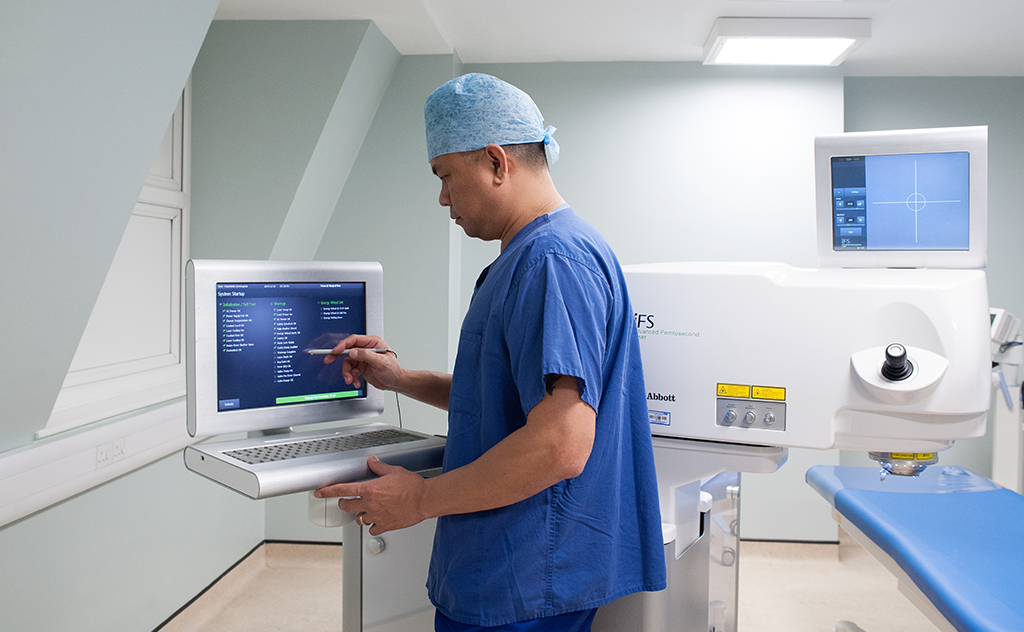
If you would like more information about what happens on the day of your treatment and what to expect in the days, weeks and months that follow, please refer to our Laser Refractive Surgery information booklet, available at the bottom of the page.
Possible complications
Mr Stevens has an excellent track record for achieving a very low complication rate for both IntraLASIK and LASEK. However all surgery carries some risk. Laser eye surgery does have some side-effects such as dry eye, which is very common in the first few weeks or months, but normally resolves. It can persist, so those who have dry eye prior to refractive surgery, particularly those who have worn contact lenses for many years may be better with an alternative procedure, such as the ICL.
When performed by a skilled surgeon with modern equipment, laser refractive surgery has a very low risk of serious complication with significant reduction in vision (1 in 1000). Lesser complications affecting vision that are treatable or which resolve over time, are about 0.5% to 1.0% using the latest equipment. There is some degree of unpredictability with any refractive surgery and this is greater for larger treatments, so further treatment may be required.
More common issues include dry eye or blepharitis (irritation of the eyelids) in the healing period and haloes or glare. Modern wavefront guided treatment helps to minimise haloes and glare. The US FDA performed the PROWL studies to investigate this.
Please refer to our Laser Refractive Surgery information booklet for more detailed information. You should read all the information given to you about possible complications before undergoing any treatment.
Alternatives to laser eye surgery
Some people are unsuitable for laser eye surgery, but many can have alternative forms of refractive surgery to achieve best results.
Refractive lens exchange (clear lens surgery, refractive lens replacement)
This is where the natural lens of the eye is removed and replaced with a high technology acrylic intraocular lens implant (IOL). Julian Stevens is also highly experienced in lens implant surgery.
Phakic lens implant (phakic IOL, intraocular contact lens, ICL)
In this procedure, a lens similar to a miniature contact lens is placed into the eye in front of the natural lens. Phakic lens implants are most commonly used in those who are younger where reading glasses are not yet required.
Spectacles or contact lenses
All refractive procedures are elective. Alternatives to treatment are spectacles and contact lenses provided by your own optician.
Frequently asked questions

Is laser eye surgery safe?
When performed by a skilled surgeon with modern equipment, wavefront-guided IntraLASIK and wavefront-guided LASEK have a very low risk of serious complication.
I have difficulty with contact lenses because of dry eye. Is treatment right for me?
One of the commonest groups of people seeking laser eye treatment are those who are having difficulty wearing contact lenses due to dry eye or sicca syndrome. Laser eye treatment can be performed but the management of dry eye is important for a comfortable post-op recovery.
What is the difference between wavefront-guided and wavefront-optimised treatment?
Wavefront-guided treatment is a customised individual wavefront procedure based on a wavefront scan of the eye and offers the potential to achieve the best possible outcome. Wavefront-optimised is based on an optician’s sight test and the laser treatment shape is based on wavefront scans of the population rather than the individual. It is not specific to the individual eye.
How good will my vision be following laser eye surgery?
Wavefront-guided treatment provides good or very good vision and most people are very pleased. However, for some people, vision after the procedure may not be quite as good as with their previous glasses or contact lenses. In this case further treatment may be required.
Some people, especially those with naturally large pupils or those having large treatments, may perceive a soft glow around lights or hard objects at night. Those who are very sensitive to visual phenomena have reported haloes or glare at night after laser eye surgery.
About the procedure
Does the procedure hurt?
IntraLASIK is not painful as anaesthetic eye drops are put into the eye before treatment. However, there is a brief sensation of pressure. With LASEK there is no pressure sensation and no pain or discomfort during treatment.
I am really nervous about having treatment, can I have some sedation?
It is normal to be anxious before treatment but most people do not have sedation. The procedure does require you to look at the flashing target light, so too much sedation may be disadvantageous. If you feel you need sedation then please do request it as you are better relaxed during the procedure than over anxious.
What if I close or move my eyes during the treatment?
During the procedure a micro eyelid clip is used to prevent you blinking. Many people worry they will move their eye but the excimer laser has a sophisticated eye-tracking system, so this is not a cause for concern.
How long does the treatment take?
It is not a race; treatment takes as long as necessary. Each eye takes about four minutes for both IntraLASIK and LASEK. You will be in the laser room for between 15 - 20 minutes in total.
Can I have both eyes treated at the same time?
Most people have both eyes treated during the same treatment session. It is possible to treat one eye at a time but one eye is then ‘ahead’ of the other during the post-op healing process. Conventionally there is more risk with both eyes being treated during the same treatment session because the outcome is not known before the second eye is treated. However, laser eye surgery has low enough risk that most people find the convenience of both eyes being treated outweighs other considerations.
Will I need to be in London overnight?
For those having IntraLASIK there is a check-up the next day, so if you are travelling a long distance you will need to make arrangements to stay locally. We can recommend [hotels and restaurants near Regents Park / Queen Anne Street W1.]
About activities after treatment
How soon can I drive?
Following IntraLASIK you can normally drive the next day. However your vision needs to be checked the day after treatment to confirm that you exceed the driving standard. For LASEK, the slower recovery of vision means that you typically exceed the vision standard for driving one week after treatment, although most people do not drive at night until two weeks after treatment.
When can I go back to work?
After IntraLASIK many people return to work the next day. After LASEK most people take a week off work to allow their vision to recover. For those with ‘vision critical’ occupations, such as military personnel, police and pilots, there are specific requirements for vision after treatment before returning to duty. These individual requirements will be discussed with you.
When can I use a computer?
Vision normally returns very quickly after IntraLASIK, so many people use a smartphone or text immediately after treatment. A computer screen is normally legible a few hours after treatment or the following day. For those who are older, glasses may be required for near work. For LASEK most people are able to use a computer after six days.
When can I play sports?
After IntraLASIK many people are able to perform light exercise or sport the next day. Contact sports should be avoided for a month. Many people can swim after two weeks and scuba dive or ski after a month. After LASEK, light exercise can be performed after a week. For swimming, skiing and scuba diving we recommend the same as IntraLASIK.
Can I fly after the procedure?
Many people fly as a passenger the next day after the follow-up appointment. Pilots will need to comply with the relevant flying licence regulations following laser eye treatment.
About the long term
Is laser eye surgery permanent?
Long-term studies have shown that laser eye surgery is stable in most people over the long term. Laser surgery has been performed for over 25 years but not everyone has stable vision throughout their life. Those who are very myopic (short-sighted) may have increased myopia over the years but still undergo eye surgery. However, there may be the need for further treatment or to wear a weak spectacle or contact lens correction in the long term.
Will my vision get worse as I get older?
After laser eye surgery, the ageing process within the eye still continues throughout life. Everyone with normal distance vision will eventually need reading glasses in middle age.
What happens if I develop cataract in later life?
Cataract surgery is the same as normal after previous laser eye surgery, but the calculations for the lens implant are more involved.
Will I need to go back to my optician after treatment?
After your follow-up appointments with Julian Stevens are complete you should return to the care of your local optician for long-term sight testing and review of your eyes.
